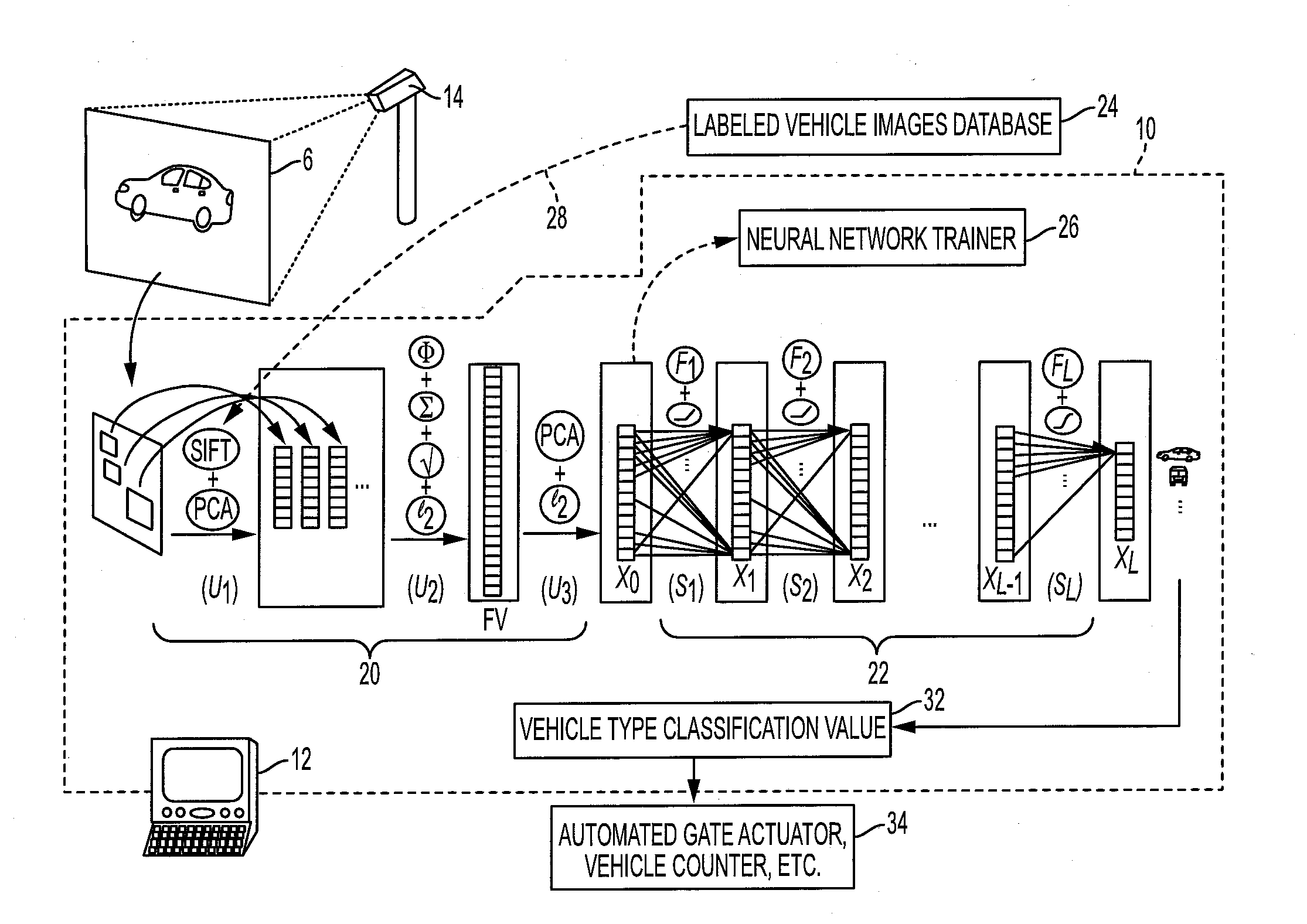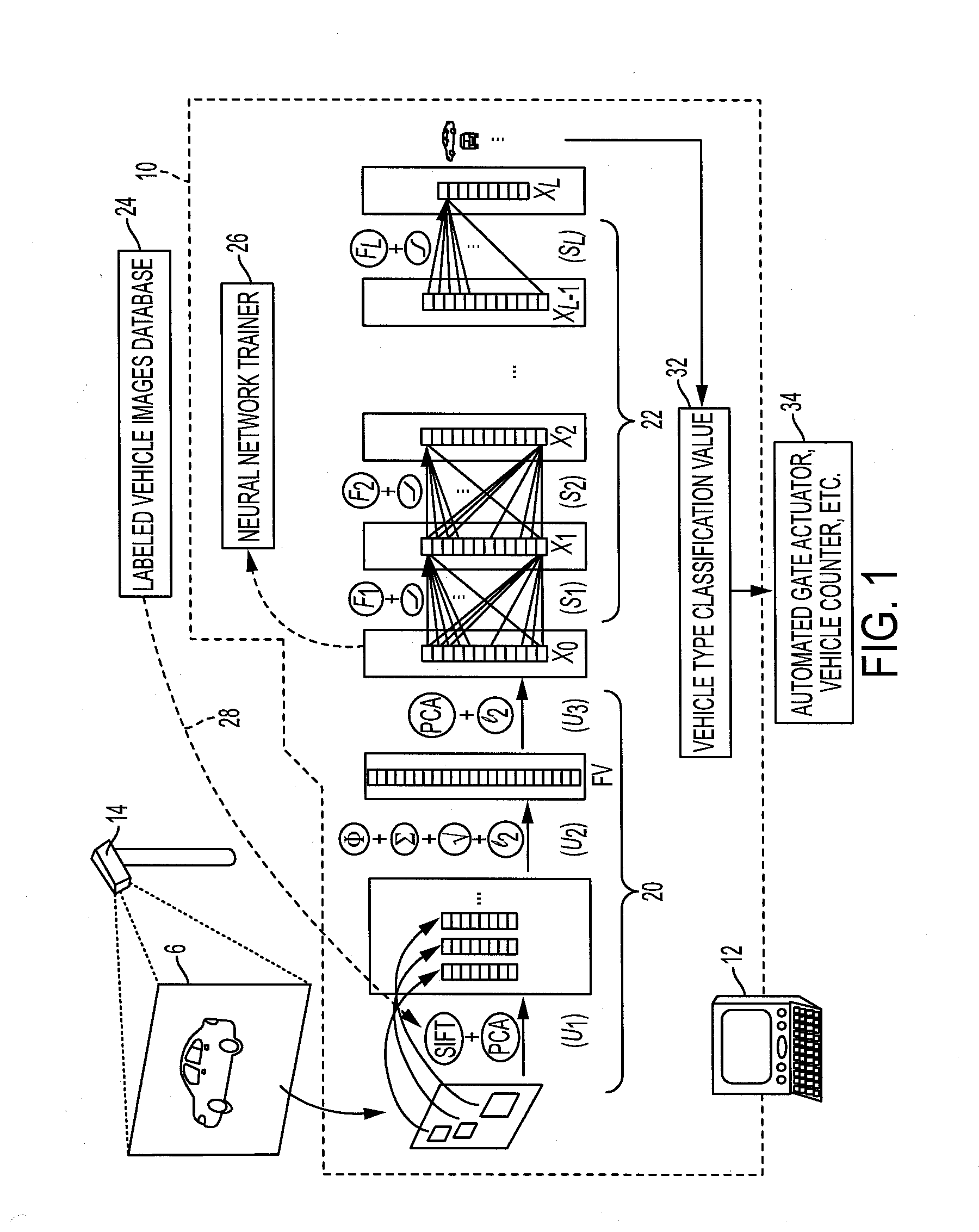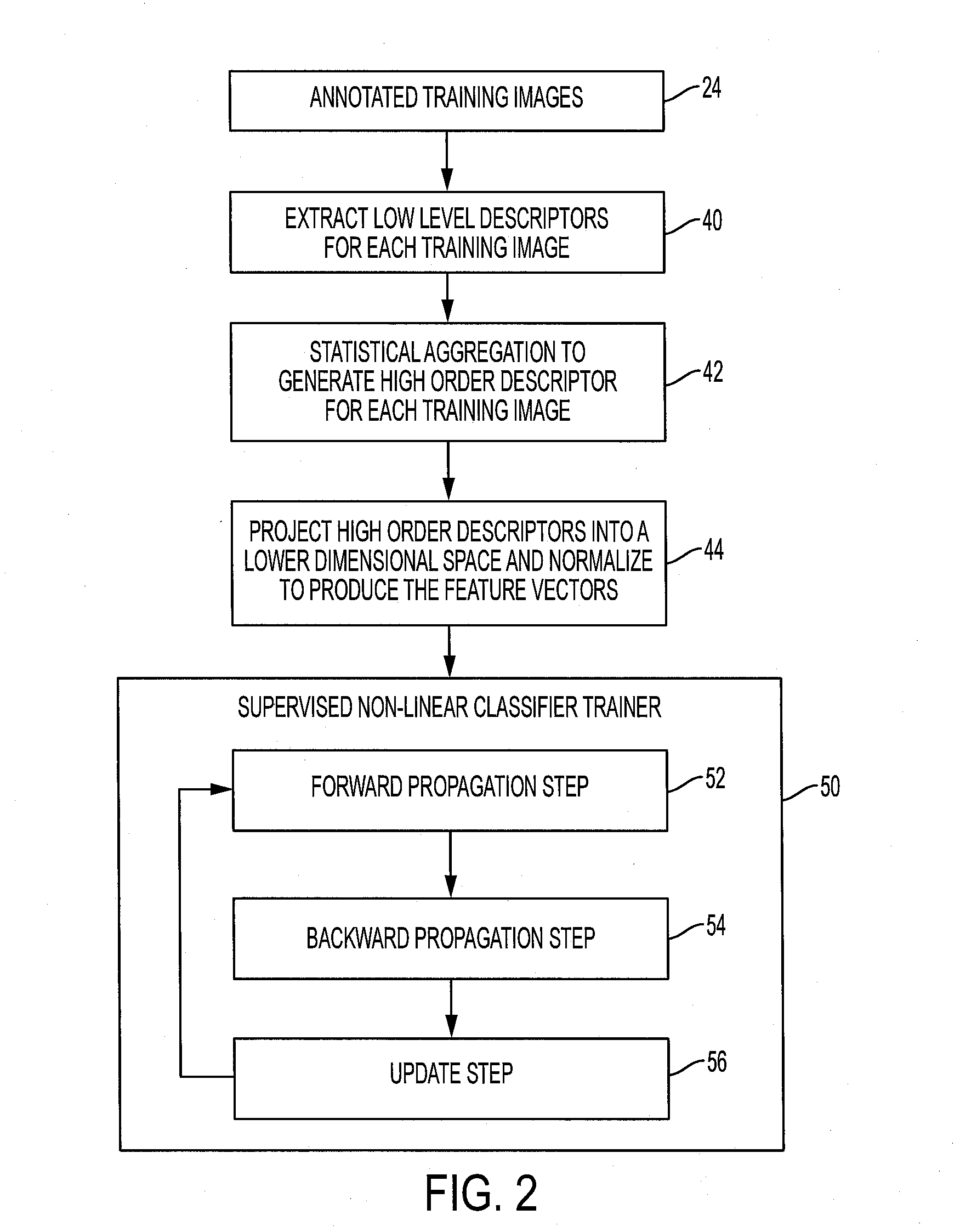Fisher vectors meet neural networks: a hybrid visual classification architecture
a neural network and fisher vector technology, applied in the field of camera-based survey systems, can solve problems such as undesired image distortion and challenging tasks
- Summary
- Abstract
- Description
- Claims
- Application Information
AI Technical Summary
Benefits of technology
Problems solved by technology
Method used
Image
Examples
Embodiment Construction
[0013]CNN image classifiers operating directly on overlapping image regions via the overlapping receptive fields of the neural network have been found to outperform BoP classifiers that operate on feature vectors extracted from the image. Advantageously, the increasing availability of GPU systems facilitates use of CNN image classifiers.
[0014]However, CNN image classifiers have certain disadvantages. The CNN architecture compares overlapping image regions via overlapping receptive fields. To use this approach, the image undergoing classification is cropped, re-sized, or re-dimensioned (e.g. stretched) as needed to match the size and aspect ratio of the training images. Any image distortion introduced by these operations can lead to spatial mismatch between the image being classified and the training images, which can degrade performance of the CNN classifier. The CNN architecture based on overlapping receptive fields also means that CNN image classifiers do not exhibit strong geomet...
PUM
 Login to View More
Login to View More Abstract
Description
Claims
Application Information
 Login to View More
Login to View More - R&D
- Intellectual Property
- Life Sciences
- Materials
- Tech Scout
- Unparalleled Data Quality
- Higher Quality Content
- 60% Fewer Hallucinations
Browse by: Latest US Patents, China's latest patents, Technical Efficacy Thesaurus, Application Domain, Technology Topic, Popular Technical Reports.
© 2025 PatSnap. All rights reserved.Legal|Privacy policy|Modern Slavery Act Transparency Statement|Sitemap|About US| Contact US: help@patsnap.com



